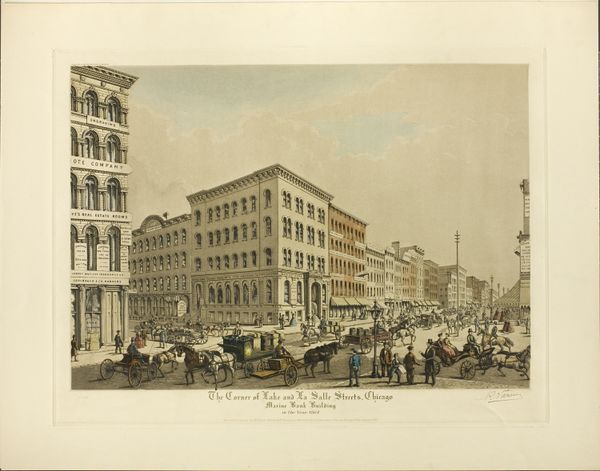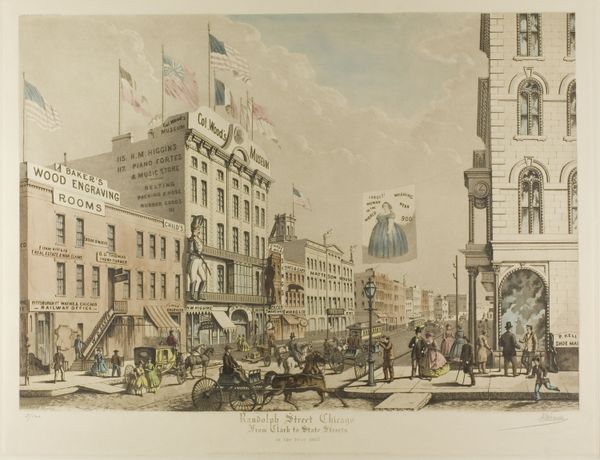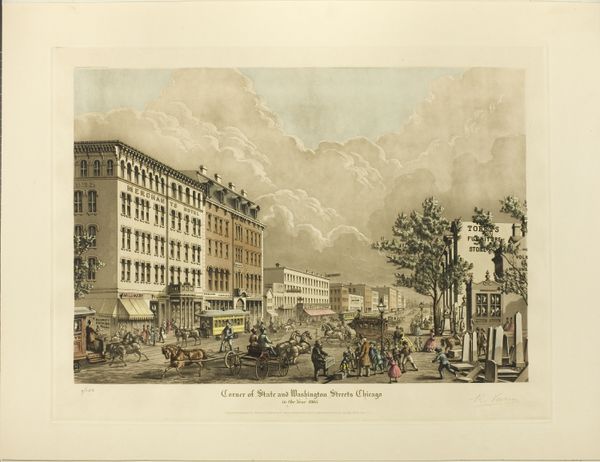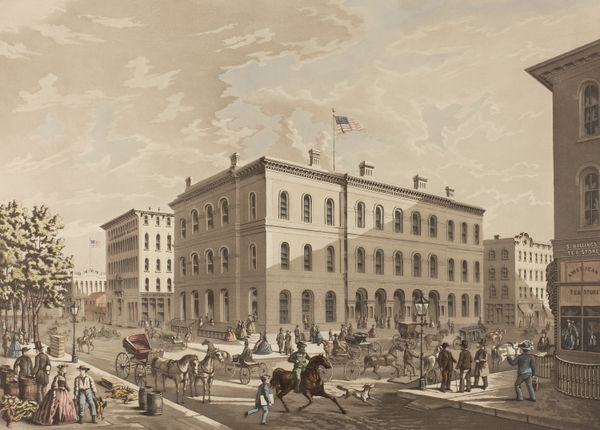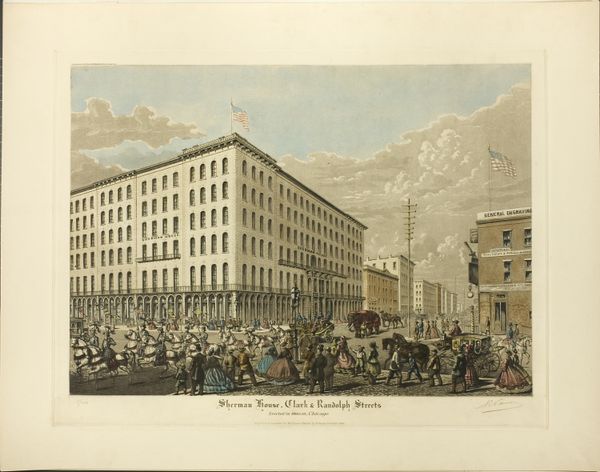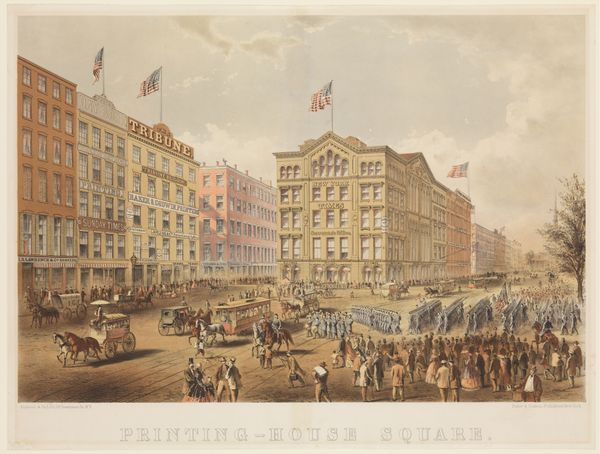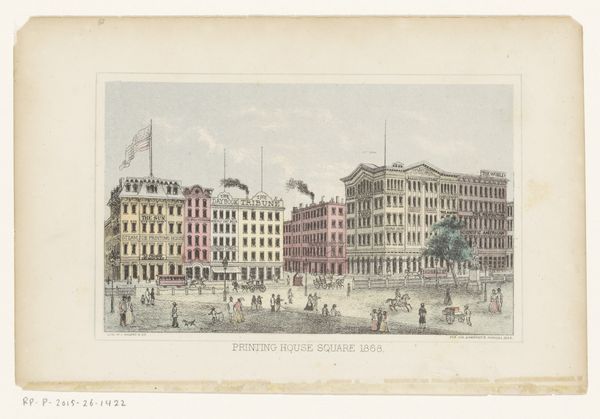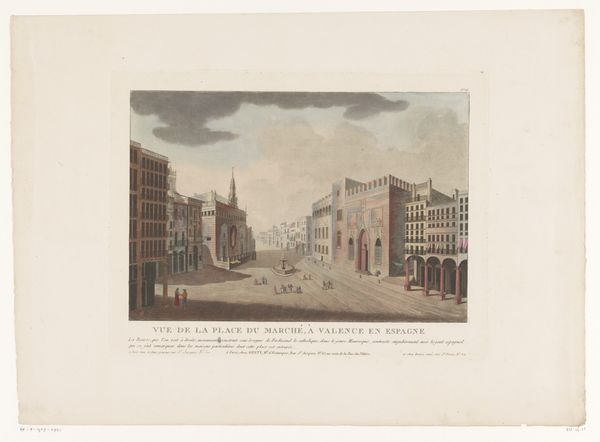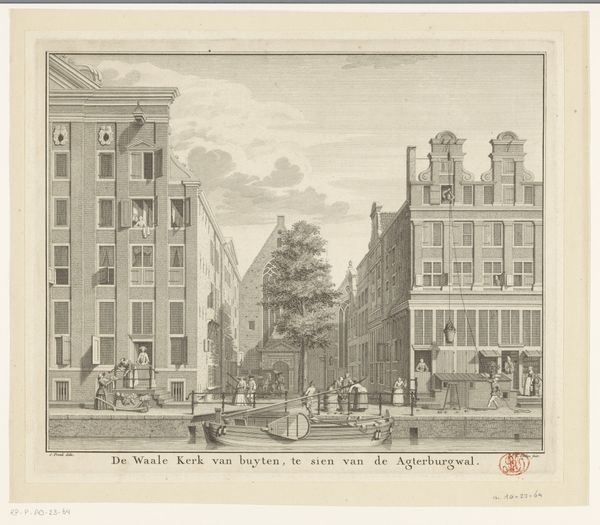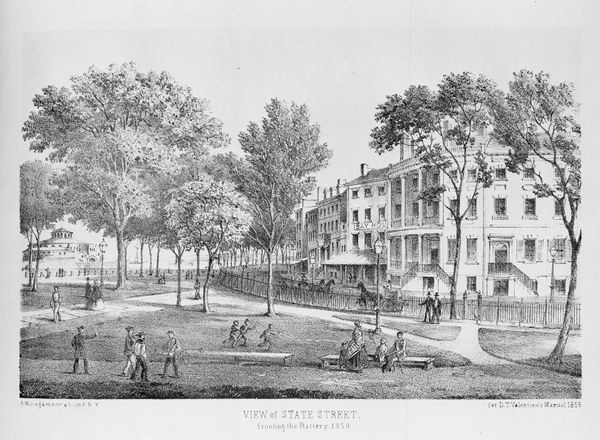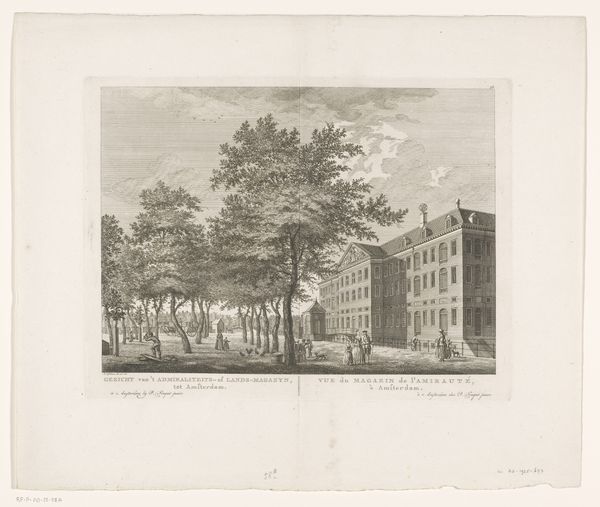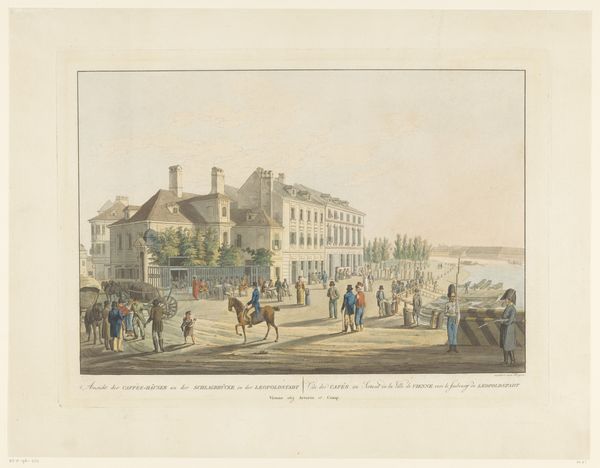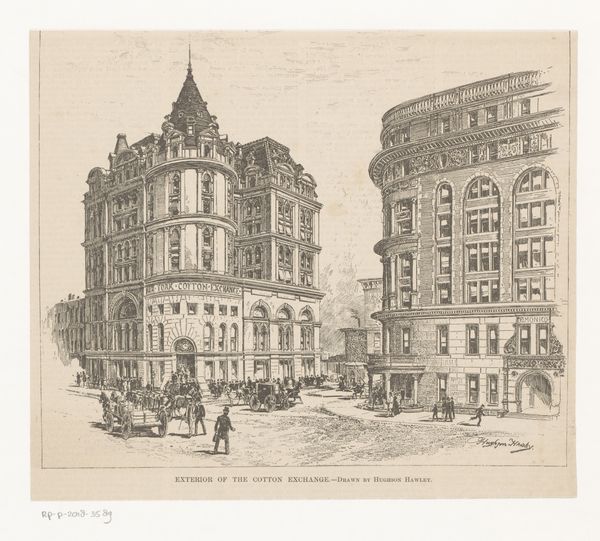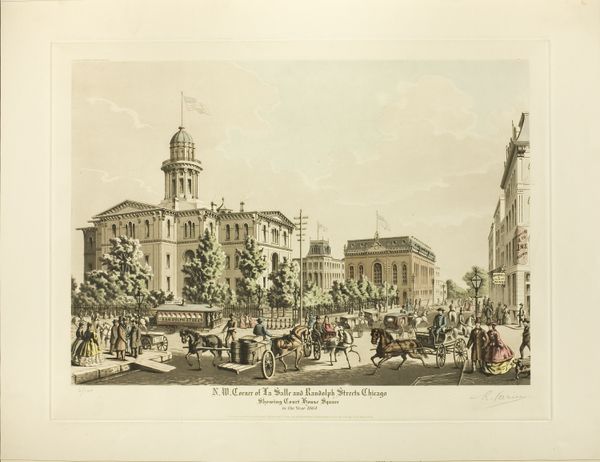
Washington Street between State and Dearborn, Chicago, Showing Crosby's Opera House in the Year 1864 c. 1927
0:00
0:00
drawing, print, paper
#
drawing
#
16_19th-century
# print
#
pencil sketch
#
paper
#
cityscape
Dimensions: 390 × 547 mm (image); 451 × 488 mm (plate); 540 × 708 mm (sheet)
Copyright: Public Domain
Curator: Welcome. We're looking at Raoul Varin's rendering of "Washington Street between State and Dearborn, Chicago, Showing Crosby's Opera House in the Year 1864." This drawing, rendered around 1927, captures a moment in Chicago’s bustling past, rendered in print on paper. Editor: My first impression is of an almost dreamlike stillness amidst implied activity. The details of daily life frozen in time by the artist's hand... it's evocative. Curator: Notice how the artist used printmaking techniques to create multiple layers, mimicking the textures of brick, wood, and the fabrics of the figures’ clothing. The labor involved in producing such a detailed streetscape, with its repetitive architectural elements, underscores the industrious nature of the depicted city. Editor: Absolutely. The flag atop what I presume is Crosby's Opera House itself symbolizes aspiration and perhaps even a touch of civic pride after the tumult of the Civil War. The Opera House emerges as an icon of culture, rebirth and community. Curator: The composition is clever, drawing the eye toward the Opera House while embedding scenes of everyday commerce. Let's note how the printing process allows for the dissemination of this urban narrative, making art accessible beyond the elite circles it often catered to at the time. Editor: I agree. And it speaks to something about our desire to hold onto the past. To remember what once was. The scene is packed with imagery, each horse and buggy a small part of a grand symbol of progress and social gathering, from merchants conducting deals to well-dressed families on a stroll. The inclusion of the dogs by the fish stand in the left side may reflect the animals were both utility (herding/guarding), and companions or perhaps simple indicators of the plentiful city. Curator: Yes. And the subtle coloration achieved in the print serves to romanticize the city’s early urban fabric. Think of how this contrasts with the stark realities of industrial labor and class divisions present during that period. It’s important to consider the labor of the anonymous artisans involved in the printmaking and how it relates to this artistic interpretation. Editor: So true. And if we consider the artwork itself as a cultural object... it’s almost like the artist gives us an opportunity for introspection: the scene suggests continuity, the cultural memories woven within that cityscape become, ultimately, stories about ourselves. Curator: An insightful way to view this depiction! By studying both process and symbols, we're left to contemplate this captured moment, a scene made widely available because of how prints democratize the visual space. Editor: Indeed! It provides food for thought, doesn't it?
Comments
No comments
Be the first to comment and join the conversation on the ultimate creative platform.
